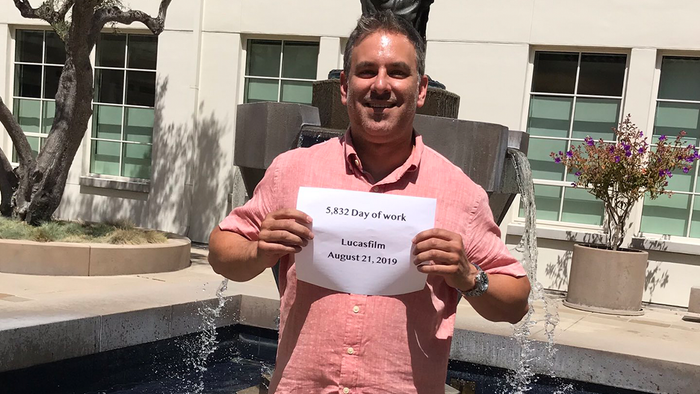
Featured Blog | This community-written post highlights the best of what the game industry has to offer. Read more like it on the Game Developer Blogs.
Bringing Finding Monsters Adventure to VR Part III - Replay Value
This is a series of articles to present the essentials for building up FMA VR version from Game Design standpoint. Part III concludes the series by explaining how he achieved our goals to increase replay value.

Disclaimer: this was originally posted as a Made With Unity story.
The first and second parts of this series of articles presented the removal of the scoring system and level design particularities, respectively. The third and last part will conclude with how we improved the game replay value, which is the aspect that guided our decisions along the development process as it was one of the goals of Finding Monsters Adventure VR as a product.
A lot of aspects of the game contributed, each as an important piece, to enhance replay value. It’s worth mentioning that we had decided, at the beginning of the project, we’d polish our edges not to have any excesses so everything needed to be a functional and vital part of the big picture. It was a good time to apply the old motto of "less is more".
Hub
When a demo for Finding Monsters VR was being made, it was added a feature of when a level would end the camera remained in the same place and the ending screen would appear there. With a few taps you could select the next level you’d like to play while staying where you were, free to look around helping to preserve immersion.
We wanted to preserve that feeling, so we created a room you could feel yourself inserted into, similar to a level, in the form of a game hub. It would be a perfect place to start the game and players could return often. That was a unique feature from the VR version that came in as a quite natural decision from a series of factors:
The VR version is meant to be what happened after Finding Monsters Adventure mobile, like if it was the FMA world revisited. Then it was the perfect situation to make further use of the kids’ room in the Lighthouse. When a hub was mentioned, this ended up being a perfect fit.
We had this idea of having collectible plushies as rewards for acquiring enough tickets, acquired from completing dares in the levels, and world mementos after playing all levels of a world. They could be accessed and stored in the hub.
It was necessary to centralize information about progress and rewards. Considering that, having a cozy place, where you could access at will to spend some time and enjoy what’s been collected, was a nice way to address both matters.

Since we opted not to have physical representation of the playing character, the kid's room also serves as a hint that you play with the other sibling, as each time you enter the game one of them is in the room sleeping.
Plushies
On the mobile version there were masks and achievements to reward progression in the game. But since masks were used for selfie, which is a feature that’s not present on the VR version, and we would not have achievements, we had to come up with a different reward.
The idea of having plushies of the monsters was something ever present during the development of the project and, as we were having the kid’s room in game, it would be the perfect thing to have in our hub and as cool rewards. And awn, the monsters did get super cute as plushies ❤

Concept art line up of the plushies.
During one of the early meetings to decide what would be done for the VR version, the idea of a simple mini-game of just grabbing and throwing plushies around came in. It was clear for how people grinned that everyone wanted to see that make into the game. Then our lead engineer took a day to prototype it and, from the start, it was tons of fun. So he came into an agreement with the producer and the mini-game made the final cut to be in the game.
This was a really good decision, not only for being a creative decision coming from the enthusiasm of the team and the way we were involved in the project, but it also made the game hub more relevant and contributed greatly for replay value. There are some people that find picking plushies and throwing them around so amusing they end up spending more time in the kid’s room than actually playing, during some sessions and especially as soon as they find about it.

When you have enough tickets, you can open the chest and withdraw a new plushie.
Dares
From playtesting the mobile version, we learned that the main reason for players to replay the levels came from trying to complete the whole dare list on them. As it was explained on Part 1, the Dare System was enhanced on the VR version.
Focusing on the Dare System provided a gameplay of interpreting contexts on each level. This made levels and the act of playing more meaningful, and also served as an invitation to notice how monsters would behave and the story of each level unfolded.

You can have a prediction of the level progression by reading the dares. For instance in the level Farewell you have to meet certain steps, by interacting with monsters, in order to have five by the end.
Tying a system that helps convey the level contexts to the core gameplay not only facilitated retaining attention, but helped to better communicate the player objectives, which is something our game suffered a little bit. We realized that early in the development of the mobile version, by playtesting. Since it’s a game about photographing, people often wanted to photograph as it would please them in real life, not caring much about photography or game rules. This is perfectly fine and they usually had a good time doing so. By the time they felt confused about what they should be doing, the Dare System served as a friendly reminder of the game goals.

In the level Hairy Situation have dares which happen at the time your attention is drawn elsewhere, although by playing the level you may realize how to find them on the next time.
Whoopsie
For the VR version, the Whoopsie Hunt was changed to be a side quest, as a sub-setting of the reward system. All levels have a hidden Whoopsie and they're triggered after you look at them for a short time. This makes the monster teleport and pose close to you.

When the Whoopsie is posing close to you is the best time to photograph it.
By photographing a Whoopsie you are awarded with a stamp, indicating you've collected the Whoopsie on that level. Due to its side quest nature, it's not available with tickets, being a reward bound to its own specific rules. You can only access the Whoopsie plushie if you collect its stamp on all levels.
This is also an aspect that reinforces replay for it defies people's curiosity. When you finish a level, there is an empty space with the label "Find the Whoopsie". The fifth level, Harry Royale, is the first level that the Whoopsie appear closer to the action, while in the previous levels it's hidden in places less likely to be looked. In case a player make it to the game without ever finding any Whoopsie, the last level of Ice Mountain, Summit, is designed to reveal the existence of this particular monster (and hiding a giant one), so unadvised players could search retroactively.

Levels in which you've photographed the Whoopsie receive the seal at the ending screen and it's also shown on the level selection screen.
Conclusion
Due to time constraints, we kept the scope short, but as we knew the project well and had a good agreement on its vision, should we have more time, we’d employ it into making additional polishing and creating more content. I feel confident to say that we’ve committed to this short scope not only because of time, but because we genuinely believed it was the best way to treat the project.
Checking our metrics the average play session of FMA mobile is around 3 minutes while the average of FMA VR is around 8 minutes. Even though the required time to settle in the VR environment is something to be considered, combining this high increment with the feedback we’ve managed to collect from a lot of players that were excited to replay levels and not blaze through the game, are reasonable to conclude we’ve achieved the desired increase in replay value.
Working on the VR version of Finding Monsters was very satisfactory, from both design and process standpoints. It was project full of learning and also with a lot of room to apply previous experiences. Regarding process, the way our team made a good use of the given empowerment and managed to get organized to come up with a final product within the timeframe of two months helped shape our internal organization for upcoming projects.
Read more about:
Featured BlogsAbout the Author(s)
You May Also Like








